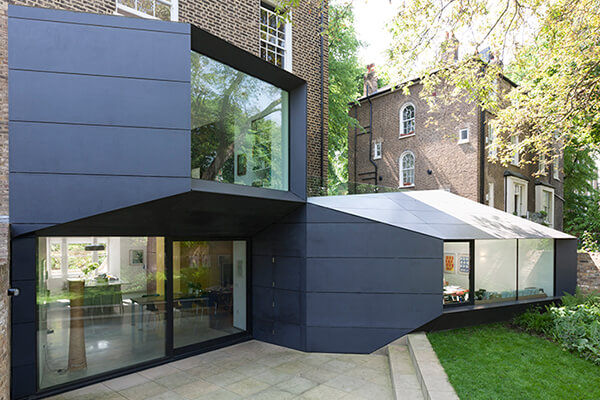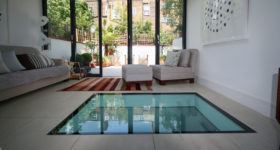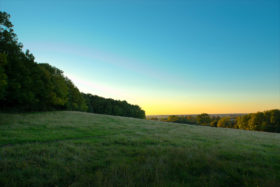
Learn from the experts with our online training course!
Use the code BUILD for 20% off
Learn from the experts with our online training course!
Use the code BUILD for 20% offWhen it first broke onto the interiors scene, Corian was principally thought of as a high performance option for kitchen and bathroom worktops.
Since then it’s risen up the ranks to become the most popular luxury solid-surface material on the market – branching out into a variety of alternative uses and expanding from the original single colour option (white) to the dozens of hues available today.
So what exactly is it and how can you use it around your home?
Corian is fundamentally a compound of acrylic resin and natural minerals. It was invented in 1967 by a chemist at DuPont and remains a registered trademark of the brand.
It’s a genuine solid surface material, in that the composition, patterns and colour are consistent throughout its thickness – so it won’t wear away or delaminate. It’s manufactured in four standard thicknesses (4mm, 6mm, 12mm and 19mm) and in a variety of sizes.
Corian has a number of attractive qualities for self-builders and renovators. It can be shaped into curves through thermoforming, for example, and large sections can be joined seamlessly with acrylic epoxy on site – making it fantastic for creating eye-catching bespoke features.
It’s also highly durable, as scratches and minor dents are easy to buff out using a fine sanding pad. Corian’s non-porous nature makes it resistant to staining and bacteria, too (simply wipe down with soapy water to tackle most debris).
So it’s easy to see why Corian started out as a contender for worktops and similar features; it offers the luxury qualities of granite and similar hardwearing materials but offers a sleek, individual and contemporary aesthetic.
DuPont operates a global network of approved fabricators and installers, which means Corian must always be fitted by an expert. While the lack of a DIY option may put off some hands-on self-builders and renovators, using an approved firm does give access to DuPont’s 10-year warranty scheme.
The kitchen is an obvious place to use Corian. Here, its durability, scratch resistance and the fact that the surface can be renewed easily makes for a long-lasting worktop. But best of all, it can be seamlessly moulded to form one-piece counters (even running the surface into splashbacks and fitted furniture, or forming integral sinks) as well as breakfast bars and island units. Prices start from £310 per linear metre for worktops, while a standard 600mm cabinet door would cost around £50.
Bathrooms are another staple for Corian, and these days you can look beyond topping vanity units and integrating basins. This non-porous material is popular for creating sleek, watertight shower cladding panels, trays and even baths.
Some high-end designers are using the surface to create bespoke furniture for living spaces, too. Corian can even be used externally for wall cladding – see the box below for a stunning example.
The wide range of colours now available (over 90, with the selection constantly growing) matches the material’s excellent versatility. Recent innovations have opened the door to darker, more intense hues. It’s worth bearing in mind, though, that DuPont itself admits deep shades tend to show scratches and other wear marks more readily than lighter or textured colours (hence why only 50 shades are recommended for worktops).
You can choose between matt, semi-gloss and gloss finishes to suit your style, and all the colours are UV resistant.

Closer Look: Corian External CladdingThis 19th century home in North London has been given a spectacular update with a dramatic contemporary rear extension by Alison Brooks Architects. The angular addition, with its dynamic contours, combines swathes of glazing with striking Corian rainscreen cladding. The new zone includes an open-plan kitchen/diner with sliding glass doors at garden level. Above this, a cantilevered extension to the living space opens onto a terrace, which rests partially over a light-filled home office. The complex geometry of the additions demanded a flat and dimensionally stable cladding material that could be cut to precise shapes. “Our original scheme proposed pre-patinated zinc cassettes,” says architect Alison Brooks. “But our client found an even more suitable and durable alternative in Corian. Its smooth finish means that the faceted sides of the building reflect light in varying shades depending on the weather, while the vented rainscreen system allowed us to conceal gutters and downpipes beneath the cladding – producing a clean, sculptural architectural form.” |
Main image: This design by Kitchens Interntional includes a stylish island unit mixing Callerton units with Corian in Glacier White


Comments are closed.